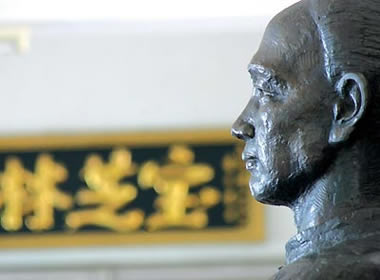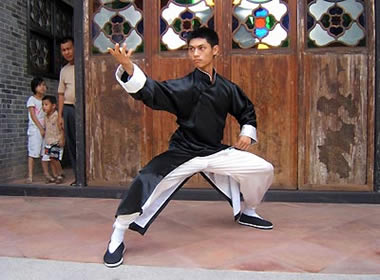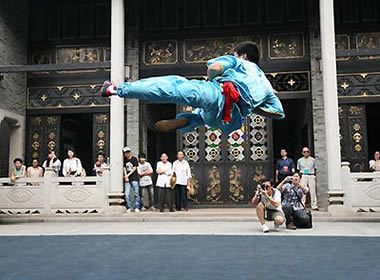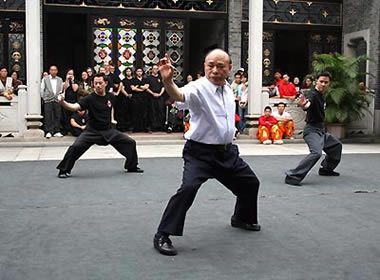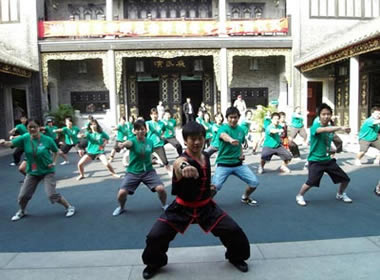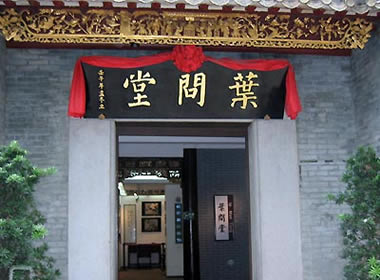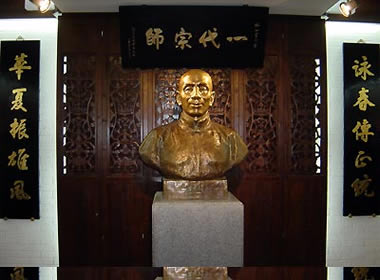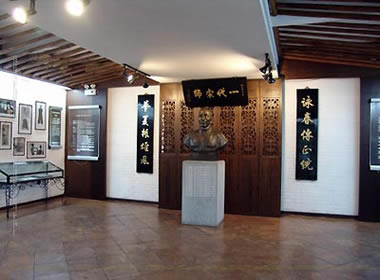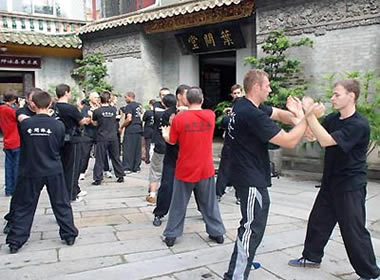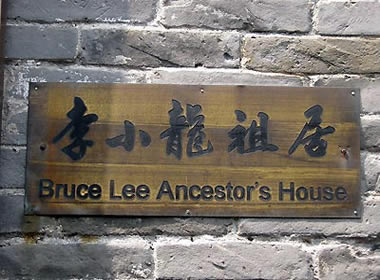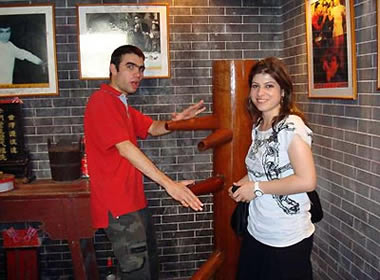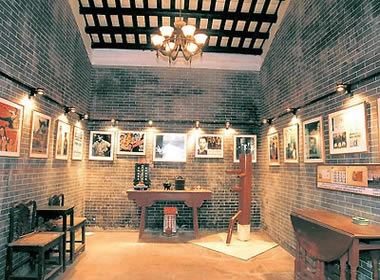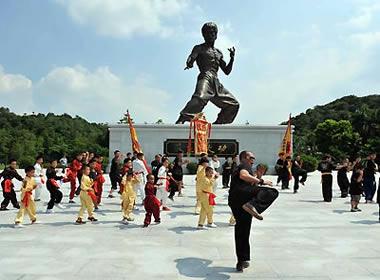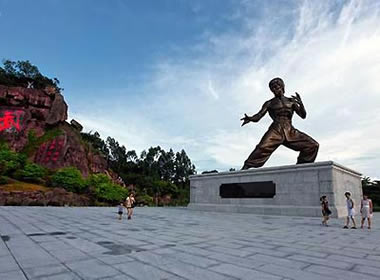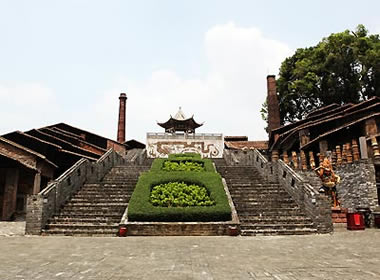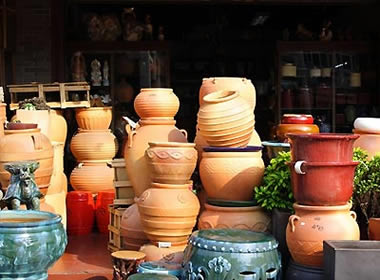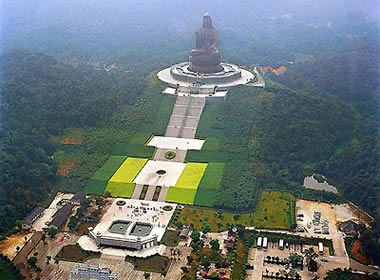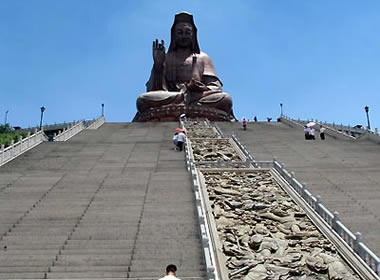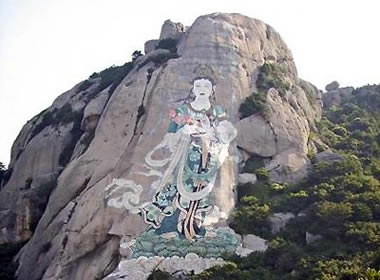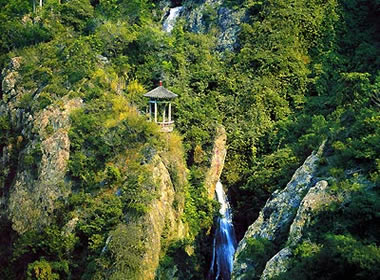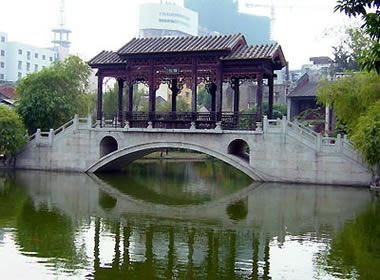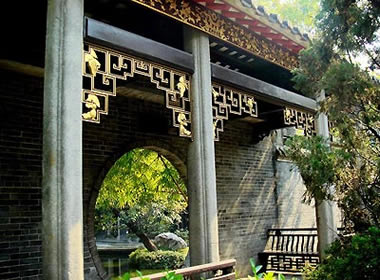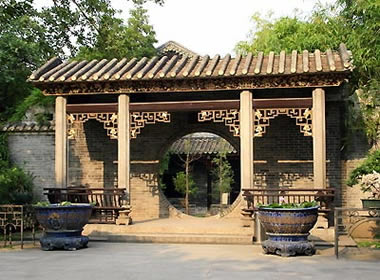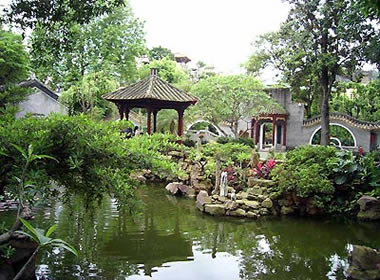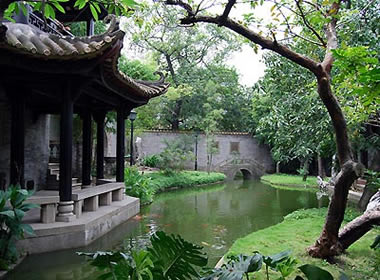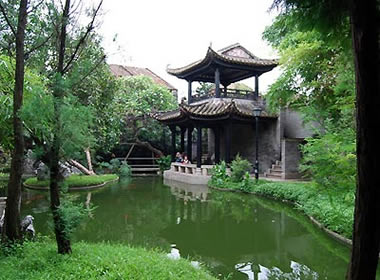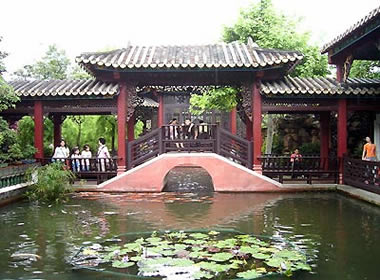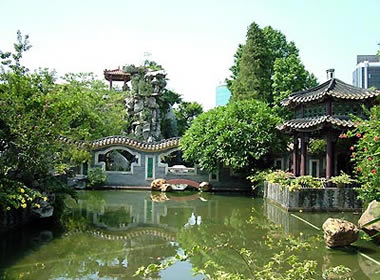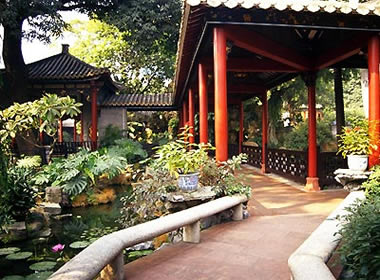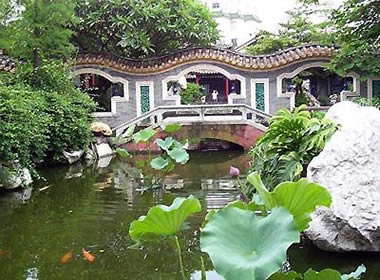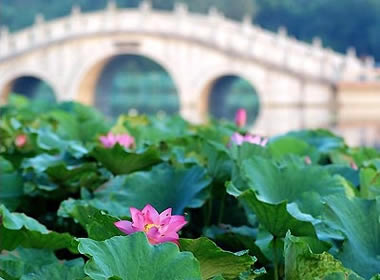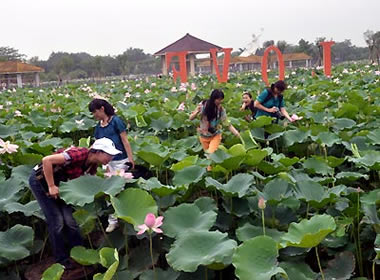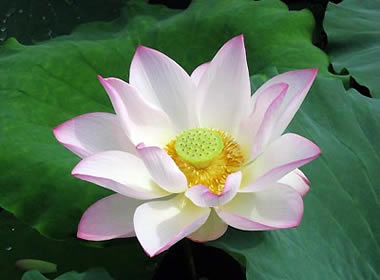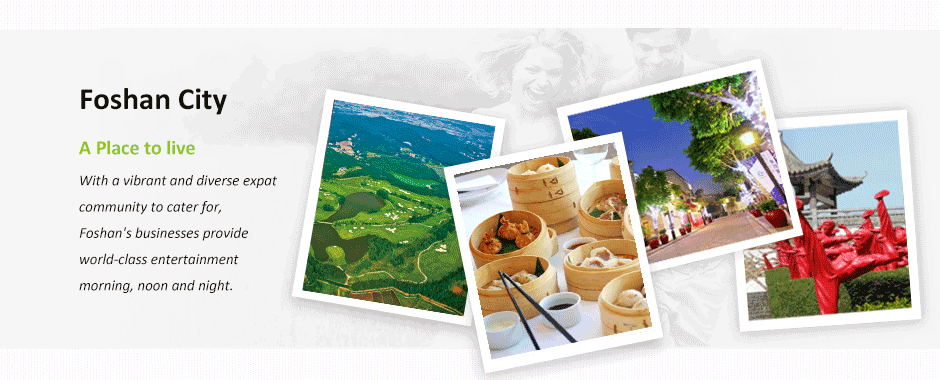
| Cultural Tours & Events | Cultural Tours | ||||||||||||||||||||||||||||||||||||||||||||||||||||||||||||||||

     |
Foshan, lies in the heart of the Pearl River Delta, neighboring Hong Kong and Macau, bordering Guangzhou to the east, Jiangmen and Zhongshan to the south, Zhaoqing to the west and Qingyuan to the north, enjoying a favorable geographic position and a well-developed transportation system, Fosha is fertile in soil, mild in climate, adequate in rainfall and the average temperature is 22.1C. Foshan is a suitable place for travelers all year around.
Foshan is a well-known city of history and culture in China. “Founded in Jin and named in Tang” and with a long history and rich culture as well, the city was crowned as one of the Four Well-known Towns and Four Commercial Centers in ancient history. Foshan is the birthplace of Canton Opera and Cantonese cuisine. Martial arts masters like Wong Fei-hung and Bruce Lee were of Foshan origin, making the city as the “Hometown of Martial Arts”. ECS can help you customize a tour to visit the attractions in Foshan.
Accolades Old temple of Foshan's protector deity now preserved by the government. Features The temple is about 3,000 square meters or .74 acres in area. People go there to worship and tour the museums and to be entertained. There are five parts: the Wanfu Terrace, Jinxiang Pool, Front Hall, Main Hall and the Qingzheng Pavilion. There are statues that catch a lot of people's interest. Some of the statues are of famed martial arts masters of the past. It is one of city of Foshan's tourist highlights. History The Foshan Ancestral Temple (佛山祖庙) is commonly called Zumiao. It is a Daoist temple, museum, and exhibition center in Foshan, Guangdong Province. Zumiao is a museum and active temple where people come to see martial arts performances, visit a museum about martial artists, and worship their ancestors or Daoist deities. Though the temple has a long history, now it is a museum and one of Foshan's major tourist attractions. The temple was built during the Song dynasty era during the reign of Emperor Zhezong about the year 1080. It was ruined during the era of the Yuan Empire when the Mongols ruled. It was rebuilt about the year 1372 during the time of the Ming dynasty. The temple is dedicated to Beidi who is the north god who is thought of as the protector of the area. In the middle of the 20th century, the temple was converted into Foshan Municipal Museum and is listed as one of the main cultural relics in Guangdong Province. More recently, the temple has become known for exciting martial arts performances. There is a museum dedicated to a Wing Chun master. It is near the gate to the temple, and it is on the left as you walk in the gate. In the museum, you can see a likeness of him, martial arts training equipment, and a plaque with information about him. These is another museum about another martial arts master there too. The museum and temple reopened in 2010 after three years of renovation. Nearby Attractions Along with the indigenous worshipers and people mainly wanting to tour the museums, many people come to watch the performances. There are both martial arts and Cantonese Opera performances. Martial artists demonstrate various martial styles such as swordsmanship and fighting with rods, and some of them perform showy gymnastics. You might also see gymnasts performing lion dances in which two or more performers dress up like a big lion. Cantonese Opera or musical performances sometimes also entertain visitors.
Wong Fei-hung (Huang Feihong) Memorial Hall is located in the north part of the Ancestral Temple. The building is modeled after the wok-handle fire-walled house of the Qing Dynasty. It reproduces the style of folk residence and ancestral temple when Huang Feihong – the great martial master was alive. The building is divided into a show room. Huang Feihong Cinema, a hall and patio for practicing Wushu, all of these represent the charism of the great master to the life. The support facilities include the statue booth of "ten Wushu masters of Guangdong province" and Huang Feihong Park as well as traditional performances such as Gongfu, "dragon-playing" and "lion-playing", etc, which will be duly performed from 10:00am to 4:00pm. All these performances are attractive to many domestic and overseas tourists. In addition, there are Huang Feihong screen and video town, Huang Feihong Wushu school and Huang Feihong Wushu village.
About Huang Feihong (Wong Fei-hung)
Wong Fei-hung (July 9, 1847 – May 24, 1924) was a Chinese martial artist, physician, acupuncturist and revolutionary who became a folk hero and the subject of numerous films and television series. He was considered an expert in the Hung Gar style of Chinese martial arts. Wong is visibly the most famous Hung Gar practitioner in modern times. As such, his lineage has received the most attention. As a physician, Wong practiced and taught acupuncture and other forms of traditional Chinese medicine in Po-chi-lam (寶芝林), his private clinic in Foshan, Guangdong. A museum dedicated to him was built in Foshan. Wong's most famous disciples included Wong Hon-hei (his son), Lam Sai-wing, Leung Foon, Dang Fong, Wong Sai-wing and Ling Wan-kai. Wong was also associated with "Beggar So" of the Ten Tigers of Canton.
The grandmaster of Wing Chun Kungfu Yip Man enjoyed an international fame. Born in Foshan and settled down in Hong Kong since 1948, Yip Man master contributed his whole life to spread Wing Chun Kungfu. This Yip Man Memorial Museum in Foshan is built to show respect towards Yip Man master as well as spreading Wing Chun Kungfu culture. The small memorial holds the grandmaster's desk and chair, wooden dummy, and photos of Wing Chung students from around the globe. In another building, tourists can watch kung fu and lion dance performances, or if they miss those, watch grainy black and white videos of the great-grandfathers (and grandmothers!) of today's action film stars shadow-fight with swords, sticks, and their iron palms.
Grand Master Yip Man
Yip Man (1 October 1893 – 2 December 1972), also spelled as Ip Man, and also known as Yip Kai-Man, was a Chinese martial artist. He had several students who later became martial arts teachers in their own right, including Bruce Lee.
Wing Chun Kungfu
Wing Chun, also romanised as Ving Tsun or Wing Tsun, is a concept-based Chinese martial art and form of self-defense utilising both striking and grappling while specialising in close-range combat. ► Yip Man and Wing Chun Kung Fu
The earliest known mentions of Wing Chun date to the period of Red Boat Opera.
The common legend as told by Ip Man involves the young woman Yim Wing-chun, (Wing Chun literally means 'forever springtime' or 'praising spring',) at the time after the destruction of the Southern Shaolin Temple and its associated temples by the Qing government:
After Wing-Chun rebuffs the local warlord's marriage offer, she says she'll reconsider his proposal if he can beat her in a martial art match. She soon crosses paths with a Buddhist nun--Ng Mui, who was one of the Shaolin Sect survivors, and asks the nun to teach her boxing. The legend goes that Ng Mui taught Yim Wing-Chun a new system of martial art that had been inspired by Ng Mui's observations of a confrontation between a Snake and a Crane; this then-still nameless style enabled Yim Wing Chun to beat the warlord in a one-on-one fight. Yim Wing-Chun there-after marries Leung Bac-Chou and teaches him the style, which is later named after her.
Since the system was developed during the Shaolin and Ming resistance to the Qing Dynasty, many legends about the creator of Wing Chun were spread to confuse enemies, including the story of Yim Wing Chun. This perhaps explains why no one has been able to accurately determine the creator or creators of Wing Chun.
The Bruce Lee Ancestral House located in Jun’an Town is another site for Bruce Lee fans to visit. Built by his grandfather, Lee lived in the house for only a short time. The residence is typical of the local style with gray bricks and black roofing tiles. A bedroom, hall, kitchen and yard together cover only 51 square meters.
In this house, you may fail to find a great secret of Bruce Lee. You also may spend a few time to do sightseeing there. But you Bruce Lee’s fans may feel excited because they just stand a place which Bruce had been lived. They can get more by close distance to this great master in Chinese Kungfu history.
More hotels and a convention center are also planned. "We are ready to welcome more friends from around the world to pay a visit here," said a tour guide at the Bruce Lee Paradise. Bruce Lee (born Lee Jun-fan; 27 November 1940 – 20 July 1973) was a Chinese American, Hong Kong actor, martial arts instructor,philosopher, film director, film producer, screenwriter, and founder of the Jeet Kune Do martial arts movement. He is widely considered by many commentators, critics, media and other martial artists to be the most influential martial artist of the 20th century, and a cultural icon.
Lee was born in San Francisco to parents of Hong Kong heritage but was raised in Hong Kong until his late teens. Lee emigrated to the United States at the age of 18 to claim his U.S. citizenship and receive his higher education. It was during this time that he began teaching martial arts, which soon led to film and television roles.
His Hong Kong and Hollywood-produced films elevated the traditional Hong Kong martial arts film to a new level of popularity and acclaim, and sparked a major surge of interest in Chinese martial arts in the West in the 1970s. The direction and tone of his films changed and influenced martial arts and martial arts films in Hong Kong and the rest of the world, as well. He is noted for his roles in five feature-length films: Lo Wei's The Big Boss (1971) andFist of Fury (1972); Way of the Dragon (1972), directed and written by Lee; Warner Brothers' Enter the Dragon(1973), directed by Robert Clouse; and The Game of Death (1978), directed by Robert Clouse.
Lee became an iconic figure known throughout the world, particularly among the Chinese, as he portrayed Chinese nationalism in his films. He initially trained in Wing Chun, but he later rejected well-defined martial art styles, favouring instead to use techniques from various sources in the spirit of his personal martial arts philosophy, which he dubbed Jeet Kune Do (The Way of the Intercepting Fist).
Situated in Jun’an, the home town of Bruce Lee, Bruce Lee Paradise park is surrounded with more than 20 green hills with flourish vegetation, where tens of thousands egrets flying together. Bruce Lee Paradise is a one-stop tourism theme park integrating Bruce Lee martial arts, history and culture of South of Five Ridges, river and lake scenery, amusement, sightseeing and major events. In Bruce Lee Paradise, there are mountains, lakes and lush vegetation everywhere, providing favorable natural environment for animal and plant growth and propagation. Currently, there are nearly 60 species of birds in total and egrets are the most common bird in the park. At dawn and dusk, egrets fly nearby Egret Island, set off by dancing willows, painting a beautiful picture. By strolling along woodland path, hiking mountains to admire beautiful scenery of mountains and lakes, or overlooking rural setting, tourists can take in breathtaking scenery of mountains and lakes. In addition to admiring picturesque natural scenery, there is Bruce Lee Commemorative Museum, Cao Chong’en Sculpture Gallery, Li Yaxin Art Museum, artificial waterfall, phoenix sculpture, Bruce Lee stature, pavilions, fish pond and ecological farm and other scenic spots in the park, where you can relax body and refresh mind.
♦ Giant Statue of Bruce Lee
The statue of Bruce Lee in this paradise is the biggest one in the world with a height of 18.8 meters. Created at a cost of nearly 2 million yuan and requiring about two years of effort, the bronze is the latest masterpiece of Cao Chongen, one of the nation's top sculptors.
The title King of Kungfu is carved in the towering statue's foundation along with a summary of Lee's life and the list of donors and sponsors.
The Ancient Nanfeng Kiln, located in Gaomiao Street of Shiwan Town., Changcheng District, is a cultural tourist attraction subordinate to 1506 Creative City. It was built in Ming Dynasty and its wood–fire has been lasted for 500 years, keep bumming and producing ceramics in its original way all along until today. It is the most long-live and best preserved ancient dragon kiln in China and even in the world, and is know as a “living relic and unmovable national treasure”. It is National 4A Tours Zone and ceramic culture holy land of the world.
♦ History of Nanfeng Kiln
According to historical documents, Foshan City became a ceramics base during the Tang (618-907) and Song Dynasties (960-1279). In the Ming (1368-1644) and Qing Dynasties (1644-1911), the ceramics were highly developed and the pottery of Shiwan Town won a national fame. The 'Dragon Kiln' played a dominant role among the kilns of Shiwan Town. Such a kiln is always built against a hill and winds its way along the slope, resembling a gigantic dragon. Now the Nanfeng Kiln is the most ancient one of the three existing Dragon Kilns.
♦ What Can Do in Nanfeng Kiln
Developing as a top attraction in Foshan, Ancient Nanfeng Kiln site will help travelers to get deep touch with Shiwan pottery culture. During the sightseeing tour, visitors can experience pottery making course. Ttourists to the kiln can make pottery by themselves with the assistance of professional workers. You can choose desired types and design distinctive patterns, making it a unique household decoration. If you want to buy some souvenirs, the pottery of Shiwan Town should not be missed.
Zhongshan Park, located at the waterfront of Fenjiang River, northeast of Chancheng District, is a complex park integrating leisure, entertainment, propagation, exhibition, scientific promulgation and dining. This Park is founded in 1928, with an aim to commemorate Mr. Sun Zhongshan. At the initial stages, the Park's total area amounted to only 0.5 hectare. After continuous expansion and reconstruction, the total occupying area of the Park reached 28.07 hectares (of which, the water area reached 12.5 hectares and greenbelts area reached 15.5 hectares respectively), forming a park sight distinguished by wide waters and abundant greenbelts. The Park is divided into nine scenic spots, of which including South Gate Square, Historical Culture Area, Seniors Sports Area, Lawn Area, Lake Area, Children's Amusement Area, Animal Show Area and Leisure Area. All of the harmonized scenic spots are scattered in an orderly manner. There are more than 20 tourist attractions, of which mainly include: Old-fashioned Camphor, Hongyan Waterfall, Spring-like Greenland, Elegant Archway, Green Bridge, Powerful Wushu Show, Shady Long Waterfront, Broad Lotus Pond, Flowery Oasis, Carp Paddling, Beautiful Lake, Overlooking the Hump, Red--crowned Crane Singing in the Morning, Coconut Tree in the Sunset, Green Wave under Rainbow, Cicada Singing in the Sunshine, etc. Both the traditional and modern techniques are integrated in tune with the landform, thereby making the tourists fascinated for its simplicity and naturalness. There are rich and colorful games staged for the children inside the Park, coupled with recreational facilities such as recreation square, overhead pulley, amusement horse race and self-controlled flying disk, etc. Therefore, all children may take delight in the Park. The occupying area of the Park's Zoo reaches 65 sq.m., wherein there are 46 species of rare animals and birds totalized at 325. Every holiday and weekend, you can enjoy their performance, of which including elephant dance, monkey shouldering water, parrot reading and dog climbing pole, etc. The Water Plant Area was completed, checked and accepted at the early 2000. This Area is famous for its English-style natural landscape, for example, its small bridge and flowing water, bibulous stone beach, scattered jungle and meadow usually make tourists fascinated. There are 26 species of water lily and pond lily, over 80 thousands carps of different colors. Therefore, it has become a vacationland. Besides, in order to enrich the cultural life of the citizens and tourists during festivals and holidays, large-scale spring flower festival will be held inside the Park every Spring Festival, at the same time, rich and colorful songs and dances, acrobatics shows and folk shows will be staged on every major holidays if practical, coupled with cultural and artistic activities such as rare stone and lamplight exhibitions, and a variety of painting and calligraphy and photographic works expos.
Xiqiao Mountain is an ancient dormant volcano located in Nanhai District, Foshan City, Guangdong Province. According to the history, Xiqiao Mountain was the major factory to make stone tools during the Neolithic age for people lived in Zhujiang Delta Region. With a history of 6,000 years, Xiqiao Mountain is a cultural symbol of Foshan City with a title of “Lighthouse of Zhujiang Delta Region Civilization”. It is also called the hometown of Nanquan Kungfu because it is the birthplace of Huang Feihong.
The mountain is an important scenic area and designated as a national forest park and national geological park. Covering an area of 14 square kilometres (5.4 sq mi), the area features a total of 72 peaks with the highest, Dacheng Peak, rising to346 metres (1,135 ft).
Today, Xiqiao Mountain is divided into ten major scenic areas including the Nanhai Guanyin Culture Park, which contains a 66 metres (217 ft) statue of the goddess Guanyin and the Baiyun Caves.
♦ Cultural background - Twin Shoulder Stone Tool Culture
As early as 6000 to 8,000 years ago, human activity in the Mount Xiqiao area created a “Twin shoulder stone tool culture” that featured delicate stone tools including twin-shouldered stone axes. This greatly influenced development of culture around the Pearl River.
During the Ming and Qing Dynasties, a number of scholars including Zhan Ruoshui and He Baiyun lived in seclusion on the mountain where they studied Neo-Confucianism and painting. Amongst the most famous scholars was Chinese nationalist Kang Youwei who began planning the 1898 Hundred Days’ Reform movement at Mount Xiqiao. Chinese martial artist Huang Feihong was born in the area, where he developed the Nanquan or “southern fist” fighting style.
Liang’s Garden is a typical model of the gardens in South China of the Qing Dynasty, also well-known as one of the four most famous gardens of Guangdong Province. Located in Songfeng Road of Chancheng District, it was built during Jiaqing and Daoguang Regions (1796 - 1850) of Qing Dynasty, consisting of residence, ancestral hall and gardens. ♦ Liang Yuan in the History
In 1982, Foshan municipal Party Committee and government initiated the salvage and restoration of the existing Qunxing Thatched Halls, with a view of its historical and artistic value as well as enjoyment. In 1990, the Park was listed as the provincial key protection unit of historical and cultural relics. Then, in 1994, with the aim to restore the Park with its total area of 21260 sq.m, a large-scale comprehensive restoring project was triggered, which adhered to the principle of "restoring the age-old as the age-old" for the purpose of retuning the Park's essence.
♦ Features of Liang Garden
Liang Garden features delicate configuration, complex buildings of residences, ancestral halls and diversified parks of Lingnan style, presenting an elegant pattern. However, the park's composition, rather than sticking to one pattern, pursues kinds of elegant, inartificial and picturesque park charm. In addition, the Park is characterized by a complete style of local architectures.
Songgang of Nanhai is a place at a distance about 12km from prosperous Guangzhou and Foshan, and it possesses a fascinating wonderland —— Nangou Peach Garden. Nangou Peach Garden Tourist Holiday Resort is a new hit scenic spot of Nanhai, as a famous land of peach bloom in Guangdong; it has been named based on the meaning from "In end of the peach forest" of Tao Yuanming. In this wonderland, plenty trees covering around it and colorful flowers accompanies the songs from birds, it also abound with natural fun, it is one of the best choice of vacation for people who live in bustling city usually and desire the returning to nature. There has no confusing noise and air pollution; the dreamlike scenes will only bring the feeling of relaxation, delight and comfort.The beautiful landscape of Nangou Peach Garden is composed by those limpid shallow streams, blooming fragrant flowers, natural fun stones and the lush greenness of flourishing forest which is over 90% coverage. It just seems like a green vitality sea merged in the oasis of modern civilization to become a wonderland that not enables to forget. And the enjoyment also could be found from the fascinating peach blooming garden and bird’s world, specially the Nanhai move and TV town, the holiday inn with countryside style and a modern Golf Club…
Qinghui Garden was built in the last period of Ming Dynasty. Today’s Qinghui Garden has become a typical traditional South China Garden with Lingnan style of construction. Fine courtyards are built inside the garden and scenes can be seen beyond scenes. Qinghui Garden in Shunde District, Foshan City is one of the top four gardens in Guangdong province. Qinghui Garden integrates Ming and Qing dynasties culture, Lingnan ancient gardening style, Zhujiang Delta Region Watertown scenery together, as the typical representative of Lingnan gardening culture. Inside the Garden, there are clear water and flourishing woods. And, water, trees, stone hills, small bridges are blended with booths and pavilions, presenting a kind of distinctive scenery.
♦ History of Qinghui Garden
Qinghui Garden was originally the mansion of Huang Shijun, the Number One Scholar in the reign of Emperor Wanli of Ming Dynasty. During the reign of Emperor Qianlong of Qing Dynasty, this garden was bought by Long Yingshi, a famous scholar at that time. Since then, the garden finalizes its style under the elaborate construction of Long clan.
♦ What to See in Qinghui Garden
With mild climate and rich rainfall, it had planted many rare as well as ordinary plants in this garden. Through many generations’ collection, it also gathered numerous colored glazes, woodcarvings, clay carvings, pottery and porcelain, etc. Those crafts have been an important part of Qinghui Garden that exhibit for visitors.
Shanshui Lotus World Park is a lotus theme park where you can enjoy viewing and traveling. More than 600 well-known flower manufacturers at home and abroad and in excess of 2 billion yuan will be introduced into the park as the whole project completed, which will be another large-scale agricultural park integrating with flower production, marketing, research, information and tourism in Shunde besides the Flower World of Chencun. The park is involved in flower trading center, landscape garden, stone garden, bonsai garden, palm garden, ornamental fish breeding park and other sections. Thereinto, the International flower trading center covers a total area of over 600,000 square meters, including more than 300,000 square meters of the first phrase, with 3,000 stores there.
♦ What to See in Lotus Park
This attraction is a theme park that integrating sightseeing and entertaining together. The following parts in this site are recommended to travelers:
► Pedestrian Street The design of this pedestrian street is in a modern idea. Allied in a umbrella shape, this street is more like a yard rather than a street. When viewing afar, it is like a lotus leaf.
► Guesthouse on the Ship (Shan Fang Chuan She)
The guesthouse is in a typical Lingnan style. This site is colored in a bright tone. the design mixes the natural color so that this architecture shows a graceful atmosphere.
► Lotus Culture Exhibition
This exhibition is built according to the model of Sydney Opera House. It aims to show different postures of the lotus. In this exhibition, people can get touch with the traditional Chinese culture via pictures and articles.
► Lotus Viewing Pavilion
From the name, we can know that this is a pavilion to appreciating lotus. With a 500-meter-long passage, visitor may enter into a lotus world. Travel in Foshan | Edward Chinese School |
||||||||||||||||||||||||||||||||||||||||||||||||||||||||||||||||





.jpg)
